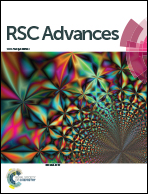The improvement of hemostatic and wound healing property of chitosan by halloysite nanotubes
Abstract
As tube-like natural nanomaterials, halloysite nanotubes (HNTs) have potential applications in wound healing due to their high mechanical strength, good biocompatibility, hemostatic property, and wound healing ability. Here, we have developed flexible 3D porous chitosan composite sponges via the addition of HNTs. Morphological observation, mechanical property, porosity, swelling ability, and degradation behavior in phosphate buffer of the chitosan–HNTs composite sponges were investigated by various physicochemical methods. Compared to pure chitosan sponge, the composite sponges exhibit a similar porous morphology with a maximum of 8.8-fold increase in compression mechanical properties. The elastic modulus, compressive strength, and toughness of the composite sponges were simultaneously increased by HNTs. The whole-blood clotting experiment suggests that HNTs can increase the blood clotting rates of chitosan. The composite sponges with 67% HNTs shows an 89.0% increase in the clotting ability compared with pure chitosan. Cytocompatibility of the composite sponges is confirmed by cell attachment and infiltration of fibroblast and vascular endothelial cells. In vivo evaluation on full-thickness excision wounds in experimental Sprague-Dawley rats reveal that these composite sponges enhance the wound healing property especially at the early stage. The composite sponges show a 3.4–21-fold increase in wound closure ratio compared to that of pure chitosan after one week. The addition of HNTs helps in faster re-epithelialization and collagen deposition. All these data demonstrate the potential applications of the chitosan–HNTs composite sponges for burn wounds, chronic wounds, and diabetic foot ulcers.


 Please wait while we load your content...
Please wait while we load your content...